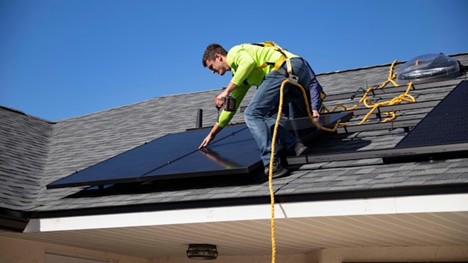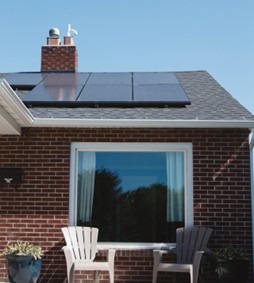
Solar energy is one of the most sustainable and cost-effective power solutions available to homeowners today. As renewable energy continues to grow in popularity, more people are turning to solar panels to cut utility costs and lower their carbon footprint. But installing panels is just the first step - ongoing care is essential for optimum performance. One key aspect is solar panel cleaning, which helps remove dirt, dust, and debris that can block sunlight and reduce efficiency.
In this article, we’ll cover simple but effective maintenance habits that can enhance your system’s output and help protect your investment for the future.
Dirt, dust, bird droppings, leaves, and even pollen can accumulate on the surface of your solar panels, creating a barrier between the sunlight and the solar cells. This reduces the amount of light that reaches the photovoltaic cells and can significantly decrease energy production. To protect your investment and ensure peak performance, it’s crucial to have your solar panels cleaned by professionals. Not only do they have the expertise to avoid scratching the delicate surfaces, but they also come equipped to handle the safety risks of working on rooftops. Don’t take chances - leave it to the pros for a spotless, safe, and efficient clean.
One of the most effective ways to ensure your system is running efficiently is to keep an eye on your energy output. Most modern solar systems come with monitoring software or apps that allow you to track performance in real time.
Be sure to set a weekly reminder to review your energy production data and look for sudden drops in output that could indicate a problem. Compare output over similar weather conditions to ensure consistency.
Tip: Knowing your system's baseline output helps you identify performance issues early and address them before they escalate.
Weather conditions like hail and wind can also cause physical damage to your solar panels. Cracked glass, loose wiring, and damaged mounting brackets can compromise the efficiency of your system.
Be sure to conduct a visual inspection at least twice a year, especially after severe weather events. Check for cracked or discolored panels, sagging wires, and rusted mounting hardware. Listen for unusual sounds or rattling that may indicate loose parts.
Tip: Use binoculars for visual inspections if your roof is not easily accessible or consider hiring a professional to perform an annual checkup, or storm follow up.
Shading is one of the most common causes of reduced solar efficiency. As trees grow, they can cast shadows on your panels throughout the day, especially in the morning or late afternoon.
Keep trees and bushes trimmed to prevent them from shading your panels. Consider hiring an arborist to trim tall trees safely, and watch for seasonal growth patterns that may cause new shade areas.
Tip: Some solar monitoring apps show which panels are affected by shade, helping you pinpoint problem areas.
Birds, squirrels, and other critters sometimes nest under or around solar panels. Their presence can lead to chewed wires, nesting debris, and even fire hazards.
Be proactive and install critter guards or mesh around the base of your solar panels. Inspect for signs of nesting or droppings; if animals are present, call a professional to remove them safely.
Tip: Don’t attempt to remove animals yourself, as doing so can cause harm to both you and the animal.
Professional maintenance ensures your system is thoroughly inspected and optimized. Properly trained technicians can identify hidden issues, test electrical components, and verify that your inverter is working efficiently.
Schedule professional maintenance at least once a year. Ask for a report detailing performance, potential issues, and recommendations. It’s also best to choose certified and insured solar professionals for peace of mind.
Tip: Some solar panel manufacturers require professional inspections to keep warranties valid.

If your system includes a solar battery or inverter, these components also require regular maintenance. The inverter converts DC power into usable AC power, and any issue with it can drastically reduce your system’s efficiency.
Action Steps:
Tip: Follow the manufacturer’s guidelines for optimal inverter and battery maintenance.
Knowing what your solar system warranty covers can save time and money when issues arise. Similarly, your homeowner’s insurance should include protection for your solar setup.
Make sure you review your warranty documents annually, and confirm that your solar investment is included in your homeowner’s insurance.
Keep records of maintenance and inspections for future claims.
Tip: Some insurance policies offer discounts for solar-equipped homes with documented maintenance.
Investing in solar energy is a smart decision for long-term savings and environmental sustainability, but your system’s performance depends on how well you care for it. By adopting a few simple maintenance habits, you can keep your panels operating at their best, extend the life of your system, and ensure a strong return on investment.
Don’t let avoidable issues drain the potential of your solar power setup. Regular maintenance isn’t just about protection - it’s about maximizing performance, saving money, and contributing to a cleaner planet.
Remember: the sun is doing its part. Make sure your panels are ready to capture every ray.